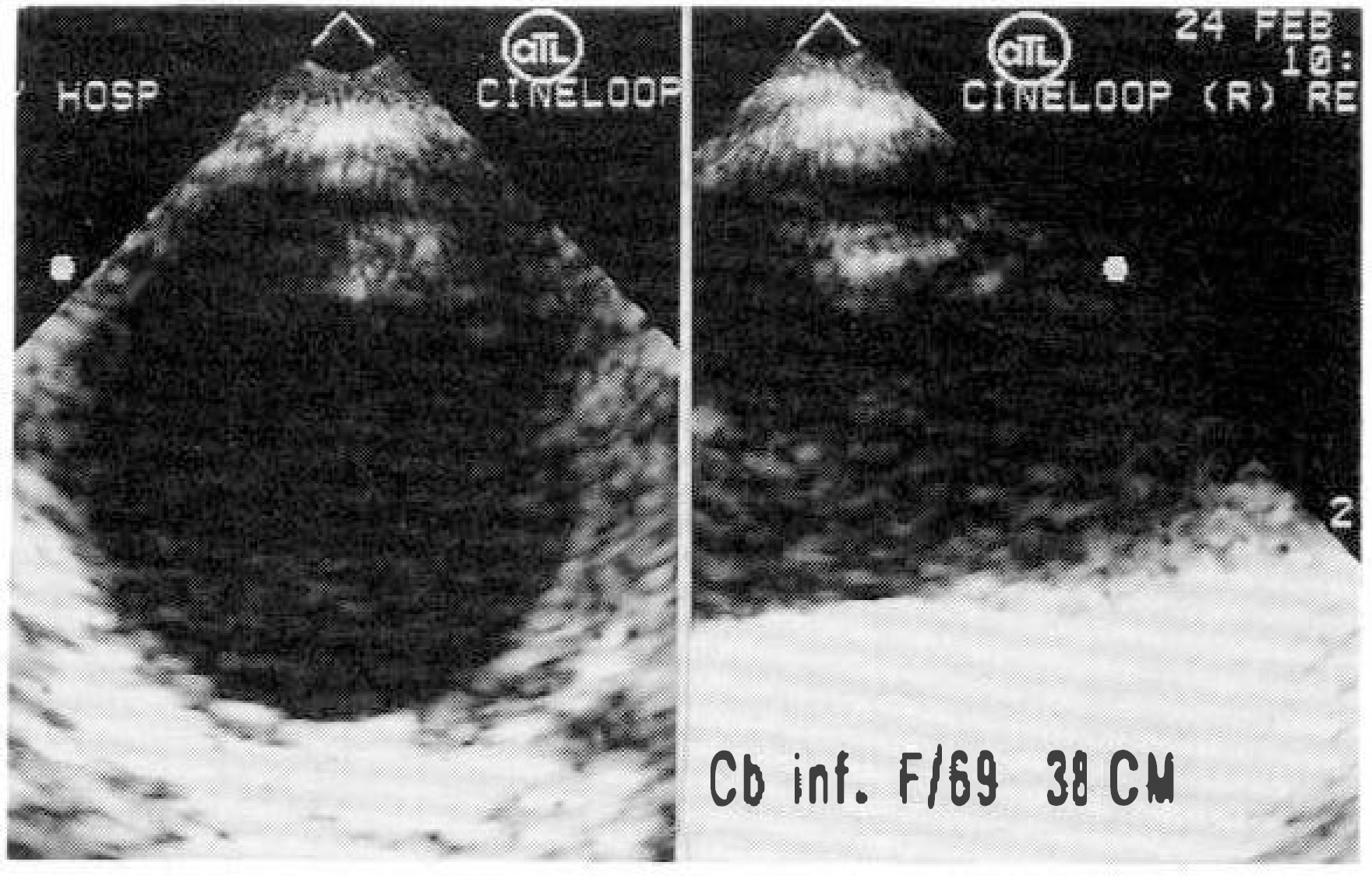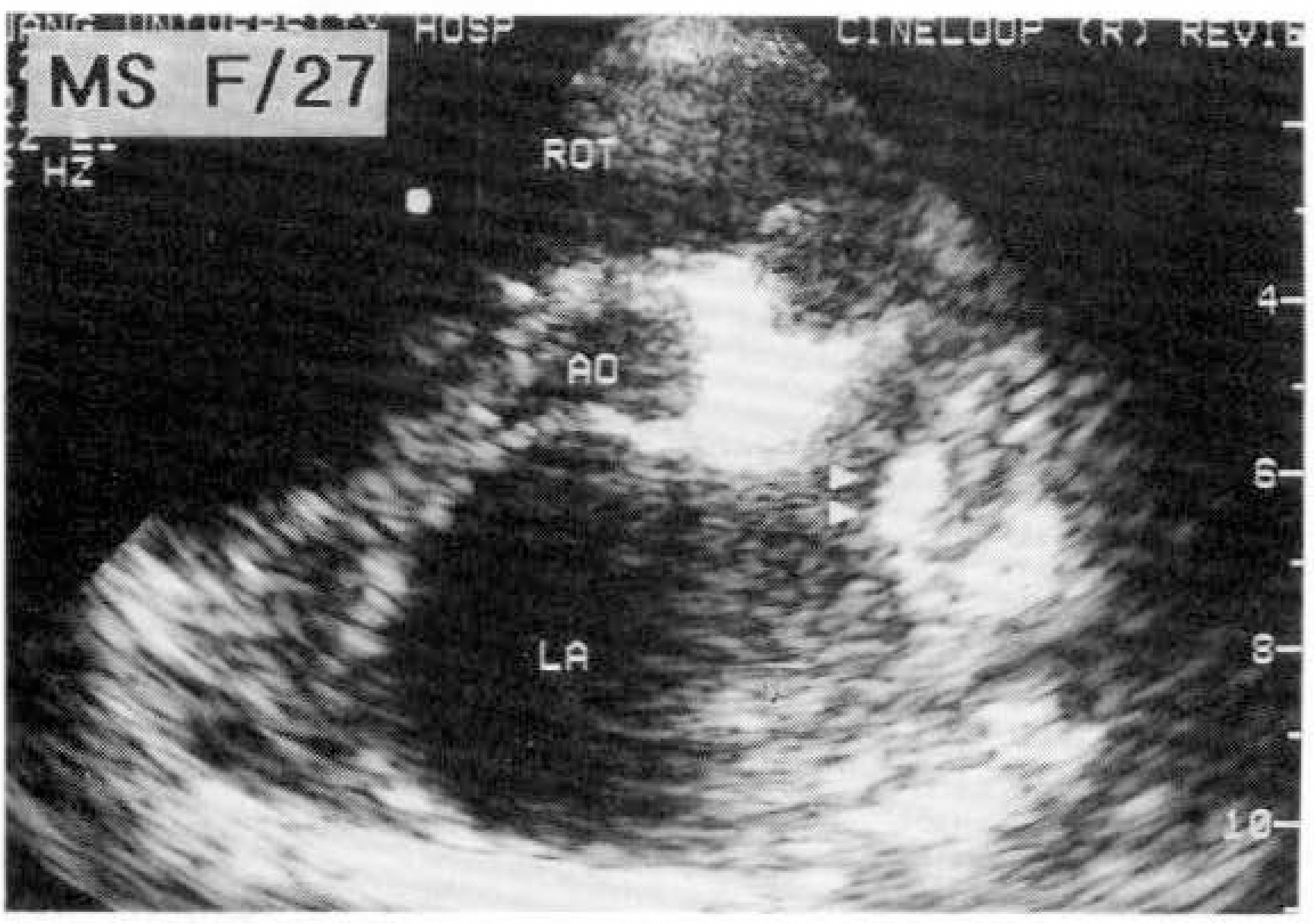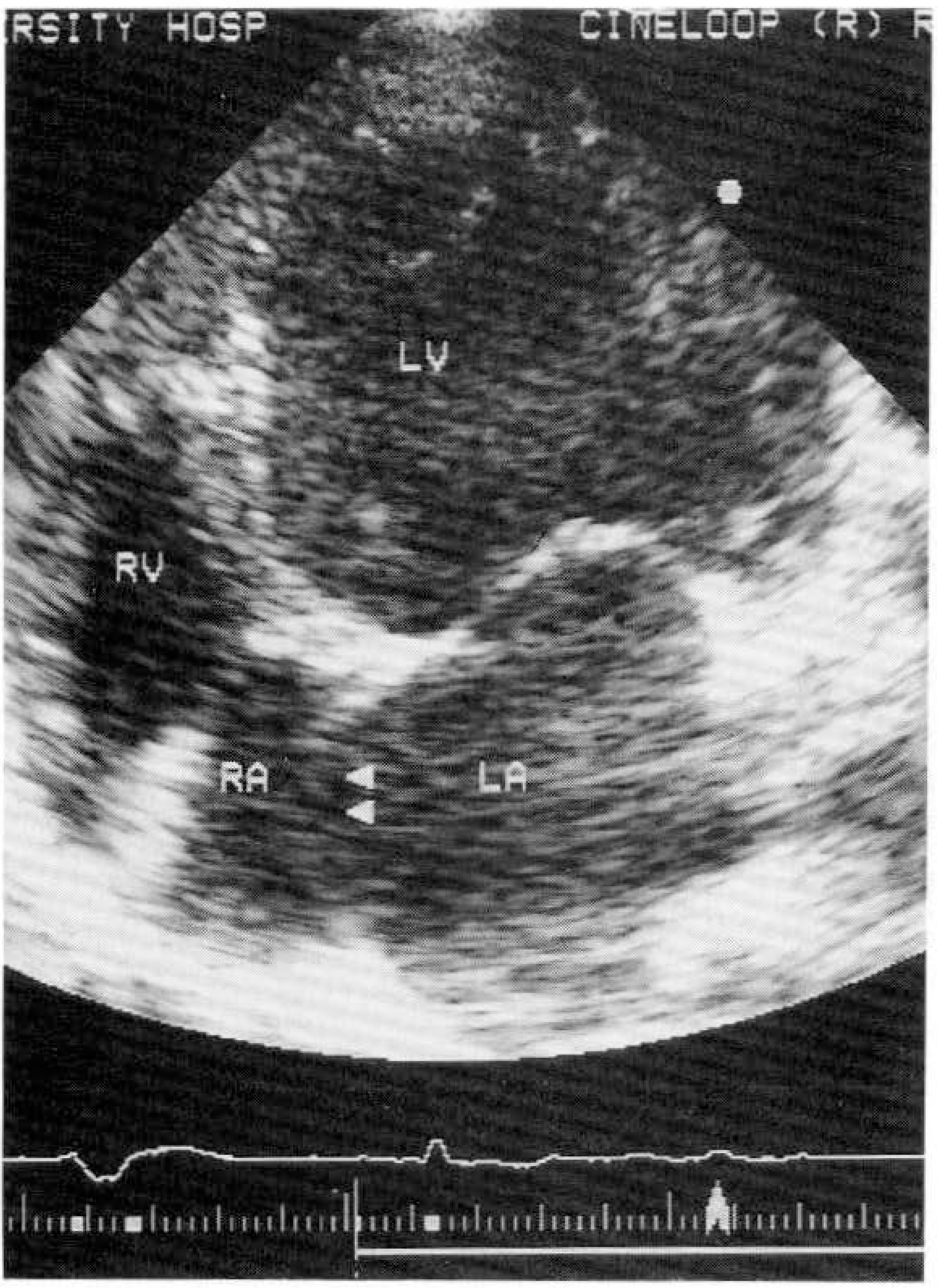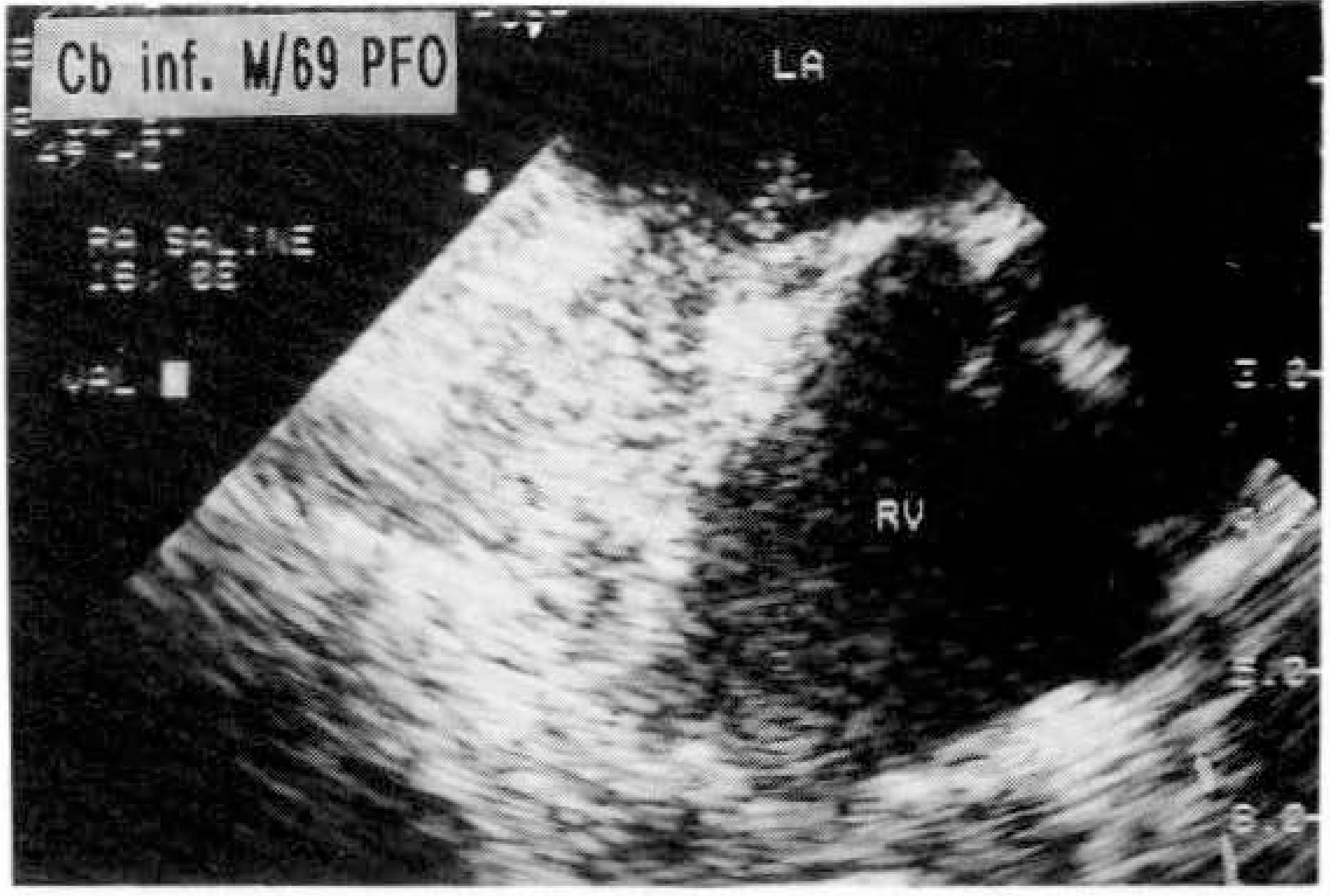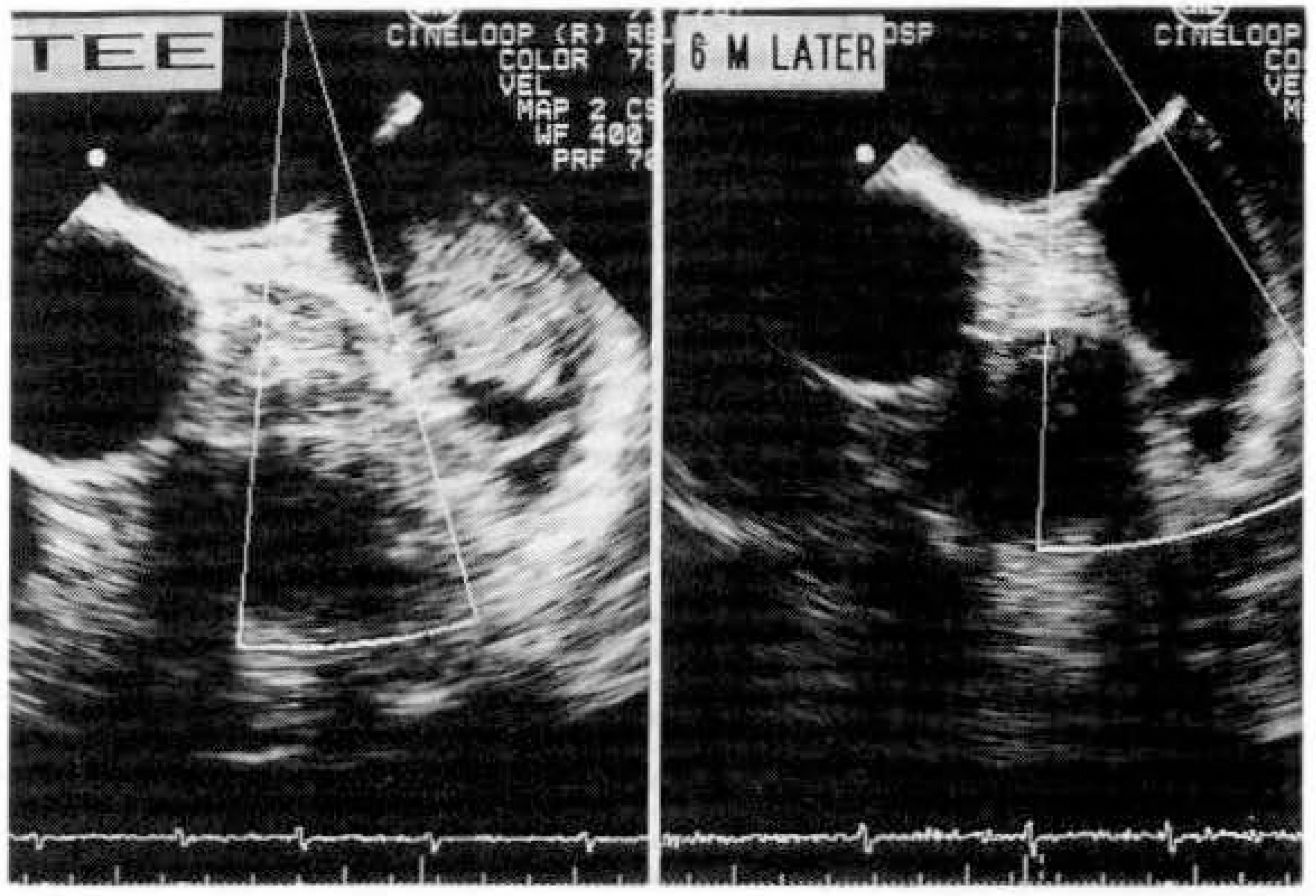J Korean Soc Echocardiogr.
1995 Jul;3(1):66-71. 10.4250/jkse.1995.3.1.66.
Transesophageal Echocardiographic Evaluation for Potential Sources of Embolism in the Patients with Ischemic Stroke
- Affiliations
-
- 1Division of Cadiology, Department of Intenal Medicine, Wonkwang University, School of Medicine, Iksan, Korea.
- KMID: 2410435
- DOI: http://doi.org/10.4250/jkse.1995.3.1.66
Abstract
- BACKGROUND
It has been reported that about one-sixth of all cerebral infarcts are due to cerebral embolism of cardic origin. But transthoracic echocardiographic examination(TTE) of patients with embolic strokes has made low yield for identifying the cause of cardiac or extracardiac source of embolism. Recently, transesophageal echocardiography(TEE) has been proved to be more sensitive than TTE for that purpose. We have studied to detect the potential sources of embolism and to asess the diagnostic yield of TEE in the patient with ischemic strokes. METHOD: Thirty-nine patients with recent cerebral ischemic events(19 men, 20 women, mean age 61), and thirty-eight control patients with other cardiac disease(14 men, 24 women, mean age 52) were examined by both TTE and biplane TEE. For detection of patent foramen ovale, transesophageal contrast echocardiography using 10 ml of agitated saline was performed in all patients. Thoracic aorta, arch of aorta, and ascending aorta were examined during pull back of esophageal probe.
RESULTS
1) TEE is superior to TTE for detection of potential sources pf embolism in the ischemic stroke patients(82 vs 21%, p < 0.001). 2) The potential sources of embolism diagnosed by TEE in the ischemic stroke patients were as follows : 18 aortic atherosclerotic plaque or clot, 11 left atrial(LA) spontaneous echo contrast, 8 LA appendage thrombus, 6 LA thrombus, 6 atrial septal aneurysm, 6 mitral stenosis, 3 patent foramen ovale and 1 prosthetic valve. 3) TEE is the unique procedure to diagnose aortic lesions, LA spontaneous echo contrast, atrial septal aneurysm and patent foramen ovale. 4) The incidence of the aortic lesions by TEE is significantly higher in the patients with ischemic stroke than in the controls(46 vs 11%, p < 0.01).
CONCLUSION
Transesophageal echocardiography is useful for detection of potential cardiac and extracardiac sources of embolism compared with TTE and is a unique method for diagnosing aortic atherosclerotic lesion, left atrial spontaneous echo contrast, atrial septal aneutysm, patent foramen ovale and small left atrial appendage thrombus.
MeSH Terms
Figure
Reference
-
References
1). Cujec B, Polasek P, Voll C, Shuaib A. Transesophageal echocardiography in the detection of potential cardiac source of embolism in stroke patients. Stroke. 22:727–733. 1991.
Article2). Sansoy V, Abbott RD, Jayaweera AR, Kaul S. Low yield of transthoracic echocardiography for cardiac source of embolism. Am J Cardiol. 75:166–169. 1995.
Article3). Anthony C. Pearson, David Nagelhout, Ramond Castello, Camillo R. Gomez, Arthur J. Labovita. Columbus, Ohio and St. Louis, Missouri: Atrial septal aneurysm and stroke: A transesophageal echocardiographic study. J Am Coll Cardiol. 18:1223–9. 1991.4). Anthony C, Pearson , Arthur J, Labovitz , Satyaratayan Tatineni, Camilo R, Gomez . Superiority of transesophageal echocardiography in detecting cardiac source of embolism in patients with cerebral ischemia of uncertain etiology. J Am Coll Cardiol. 17:66–72. 1991.5). Randall JL, Thomas B, Tiong-Keat Y, Harlen RG, Dennis Choi, Ingela Schnittger. Enhanced detection of intracardiac sources of cerebral emboli by transesophageal echocardiography. Stroke. 22:734–739. 1991.
Article6). Pop G, Sutherland GR, Koudstaal PJ, Tak W, Sit , Jong GD, Jos RTC. Roelanet: Transesophageal echocardiogphy in the detection of intracardiac embolic sources in patients with transient ischemic attacks. Stroke. 21:560–565. 1990.7). DeRooK FA, Comess KA, Albers GW, Popp RL. Transesophageal echocardiography in the evaluatoin of stroke. Annals of Internal Medicine. 117:922–932. 1992.8). Zenker G, Erbel R, Kramer G, Mohr-Kahaly S, drexler M, Harnoncourt K, Meyer J. Transesophageal two-dimensional echocardiography in young patients with cerebral ischemic Events. Stroke. 19:345–348. 1988.
Article9). Miguel Zabalgoitia-Reyes, Cesar Herrera, Dipeshkumar K, Gandhi , David J, Mehlman , David D, McPherson , James V. Talano: A possible mechanism for neurologic ischemic events in patients with atrial septal aneurysm.10). Petros Nihoyannopoulos, Jayshree Joshi, George Athanasopoulos, Celia M. Oakley: Detection of atherosclerotic lesions in the aorta by transesophageal echocardiography. Am J Cardiol. 71:1208–1212. 1993.11). Tunick PA, Kronzon Itzhak, New York NY. Protruding atherosclerotic paque in the aortic arch of patients with systemic embolization: A new finding seen by transesophageal echocardiography. Am HEART J. 120:658. 1991.12). Simons AJ, Carlson R, Hare CL, Obeid AI, Smulyan H, Syracuse NY. The use of transesophageal echocardiography in detecting aortic atherosclerosis in patients with embolic disease.13). Atrial Septal Aneurysm as a: Newly discovered cause of stroke in patients with mitral valve prolapse. Am J Cardio. 1991.14). Hofmann T, Wolfgang Kasper, Meinertz T, Geibel , Hanjorg Just. Echocardiographic evaluation of patients with clinically suspected arterial emboli. Lancet. 336:1421–24. 1990.15). Cererbral embolism task force. Cardiogenic brain embolism. The second report of the cerebral embolism task force. Arch Neurol. 46:727–743. 1989.16). Chang Z, Zhu , John W. Norris: Role of carotid stenosis in ischemic stroke. Stroke. 21:1131–1134. 1990.17). Lechat PH, MAS JL, Lascault G, Lechat PH, Lascault PH, Theard M, Klimczac D, Thomas Y. Grosgogeat: Prevalence of patent foramen oval in patients with stroke. N Engl J Med. 318:1148–52. 1988.
- Full Text Links
- Actions
-
Cited
- CITED
-
- Close
- Share
- Similar articles
-
- Transesophageal Echocardiographic Findings of Ischemic Stroke without Obvious Cardiac Disease
- Clinical Study of Potential Embolic Sources in Patients with Ischemic Cerebrovascular Diseases
- Enhanced Detection of Inftracardiac Sources of Cerebral Emboli by Transesophageal Echocardiography
- Prevalence of the patent foramen ovale in young patients with ischemic cerebrovascular disease: Transesophageal contrast echocardiographic study
- Transesophageal Echocardiographic Findings in Stroke Subtypes


